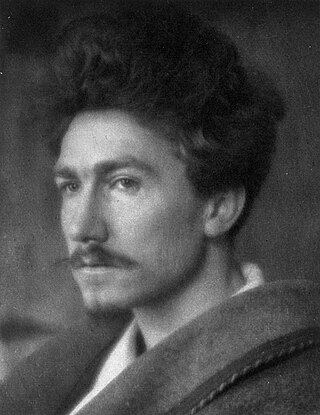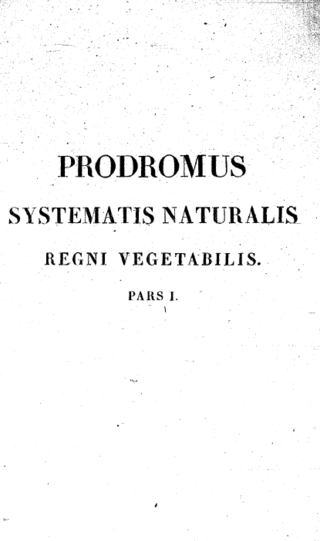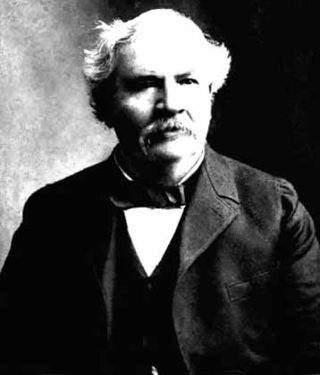
Ezra Weston Loomis Pound was an expatriate American poet and critic, a major figure in the early modernist poetry movement, and a collaborator in Fascist Italy and the Salò Republic during World War II. His works include Ripostes (1912), Hugh Selwyn Mauberley (1920), and his 800-page epic poem, The Cantos.
Gennadius of Massilia, also known as Gennadius Scholasticus or Gennadius Massiliensis, was a 5th-century Christian priest and historian.

The Cantos by Ezra Pound is a long, incomplete poem in 120 sections, each of which is a canto. Most of it was written between 1915 and 1962, although much of the early work was abandoned and the early cantos, as finally published, date from 1922 onwards. It is a book-length work, widely considered to present formidable difficulties to the reader. Strong claims have been made for it as the most significant work of modernist poetry of the twentieth century. As in Pound's prose writing, the themes of economics, governance and culture are integral to its content.

Carlo Alberto Camillo Mariano Salustri, known by the pseudonym Trilussa, was an Italian poet, writer and journalist, particularly known for his works in Romanesco dialect.

A taxonomic system, the Bentham & Hooker system for seed plants, was published in Bentham and Hooker's Genera plantarum ad exemplaria imprimis in herbariis kewensibus servata definita in three volumes between 1862 and 1883.
The De Candolle system is a system of plant taxonomy by French (Swiss) botanist Augustin Pyramus de Candolle (1778−1841).

Prodromus Systematis Naturalis Regni Vegetabilis (1824–1873), also known by its standard botanical abbreviation Prodr. (DC.), is a 17-volume treatise on botany initiated by Augustin Pyramus de Candolle. De Candolle intended it as a summary of all known seed plants, encompassing taxonomy, ecology, evolution and biogeography. He authored seven volumes between 1824 and 1839, but died in 1841. His son, Alphonse de Candolle, then took up the work, editing a further ten volumes, with contributions from a range of authors. Volume 17 was published in October 1873. The fourth and final part of the index came out in 1874. The Prodromus remained incomplete, dealing only with dicotyledons.
Vishnu Smriti is one of the latest books of the Dharmaśāstra tradition in Hinduism and the only one which does not deal directly with the means of knowing dharma. The text has a strong bhakti orientation, requiring daily puja to the god Vishnu. It is also known for its handling of the controversial subject of the practice of sati. A Banaras pandit, Nandapandita, was the first to write a commentary on the Vishnu Smriti in 1622, but the book was not translated into English until 1880 by Julius Jolly.
Gerald Martin Loeb was a founding partner of E.F. Hutton & Co., a renowned Wall Street trader and brokerage firm. He was the author of the books The Battle For Investment Survival and The Battle For Stock Market Profits. Loeb promoted a view of the market as too risky to hold stocks for the long term in contrast to well known value investors. He also created the Gerald Loeb Award, given annually for excellence in various categories of financial journalism.

Charles Anthony Goessmann, known in his native German as Karl Anton Gößmann, was a Massachusetts agricultural and food chemist.
The Tasmanian Open is an annual golf tournament held in Tasmania, Australia.
Discography for the experimental music group Bull of Heaven. As of May 2023, they have 530 releases all in total.

The Spirit of Romance is a 1910 book of literary criticism by the poet Ezra Pound. It is based on lectures he delivered at the Regent Street Polytechnic in London between 1908 and 1909 and deals with a variety of European literatures. As with Pound's later, unfinished poem The Cantos, the book follows "a pattern, at once historical and atemporal, of cultural beginnings and rebeginnings".

William Samuel Lilly was an English barrister and man of letters.
The LXXXIX Army Corps was an army corps of Germany's Wehrmacht during World War II. It was active from August 1942 until March 1945. Its commander surrendered to United States Army forces on 2 April 1945.
Leonard Nettlefold was an Australian businessman and amateur golfer. He won the Australian Amateur twice, in 1926 and 1928, and won the Tasmanian Open and the Tasmanian Amateur, eight times each.
The 8th Marching Division was a short-lived division of the Royal Italian Army during World War II. In the Italian military the term "Marching" refers to temporary units based in Italy to manage replacements for the operational units at the front.

Walther von Klingen was a nobleman from the Thurgau area who donated to and founded monasteries, and later became a close associate and supporter of King of Germany Rudolf von Habsburg. Some of his poetry, which belongs to the Middle High German Minnesang tradition, has been preserved in the Codex Manesse manuscript.















